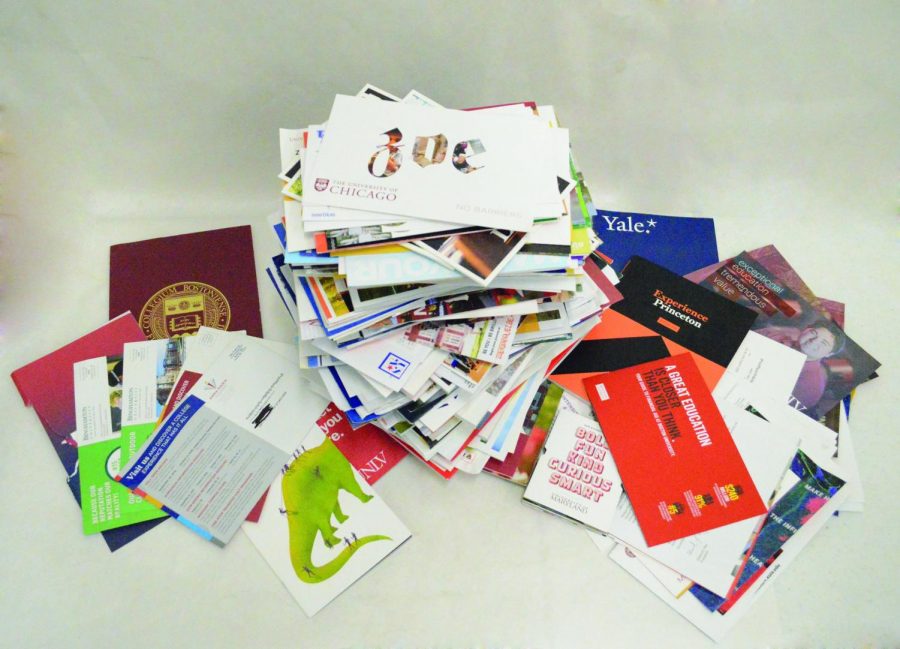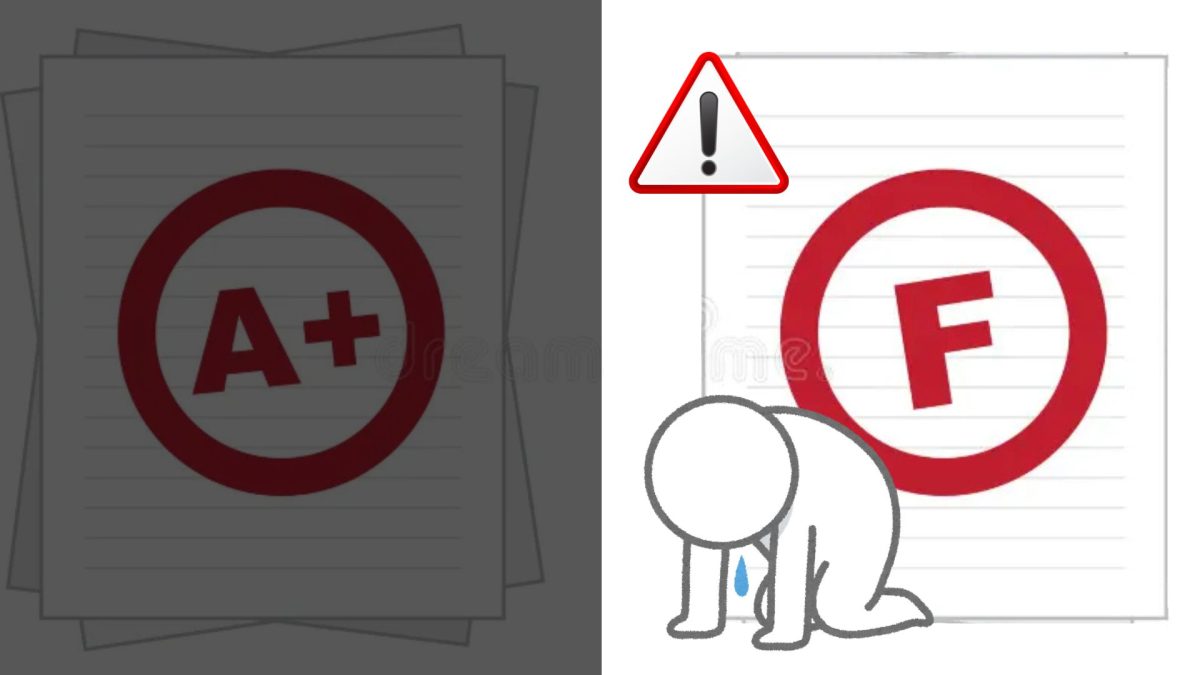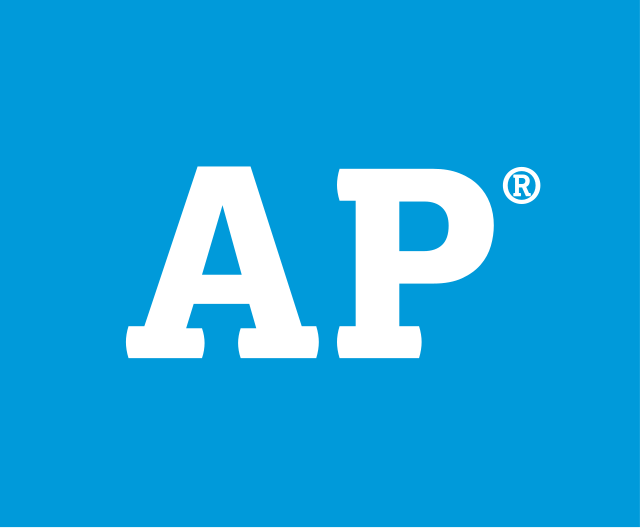You’ve Got Mail
Zoe Rodriguez’s stack of college letters and brochures.
Mar 11, 2019
For the first time in two years, my parents got more mail than I did.
Between the summer after my sophomore year and the fall of my senior year, I was bombarded with postcards, letters, brochures, fold-out posters and full-blown catalogs from every college I could possibly imagine–and those I couldn’t.
Stacked up, it stood well more than half my height–and that’s only the physical mail. If I include emails, they go into the thousands.
Now I get it, colleges only have one chance to get a student to apply. And for smaller colleges, sending something unprompted gets their names out to students who would never have heard of them otherwise.
For me, learning there was actually a place entirely dedicated to the engineering and geosciences—Colorado School of Mines—was a pretty interesting Google rabbit hole that I would never have known about if they hadn’t sent postcards and emails. Other schools gave me a good laugh by making fun of how much mail they knew I was getting and used humor to cut through the clutter.
But for some schools, I really wonder what their motivations were sending dozens of postcards without a single response from me.
Early in my junior year, I went to a presentation for Johns Hopkins. Though it’s an amazing school, it just wasn’t for me. The presentation stressed the school’s exclusivity with mentions of the acceptance rate and the average SAT and GPA required to get in.
But the Johns Hopkins postcards display something entirely different. They all talked about how their students spend their weekends and what their favorite movies are. They may have a picture of a lab coat with a beaker full of chemicals, but the postcards emphasize how ordinary their students are.
There were times that I got three postcards at a time from Johns Hopkins. After a while, I didn’t think about the average ACT score of 34. I really just thought about Marissa, an Economics major who drinks too much green tea.
It was difficult to keep in mind the 8.4 percent acceptance rate when all I saw were students that were just like me.
The real shock was when I found out how many of my friends received the same postcard from the University of Chicago where one side was personalized with my name. That kind of individualized printing couldn’t be cheap.
I didn’t think much about it at that time, but then they were in the news for being one of the first big name schools to get rid of the SAT requirement. This took me aback because I hadn’t realized that they were such a big name school. I had figured they were in the range of a 15 to 20 percent acceptance rate. But after a quick Google search, I found that I was very wrong. The acceptance rate of the University of Chicago is 7.2 percent, which is lower than some of the Ivy Leagues.
In context, I drove up to Stanford and went on their tour as well as attended an information session in downtown LA. After all of that engagement, they sent one brochure.
I didn’t go on a tour for MIT, Yale, Princeton or Harvard and they each sent one. Although each sent a substantial catalog or brochure, it was a single outreach. But judging by their application pool, I don’t think they needed my application.
So why would schools with already incredibly low acceptance rates bother to recruit more kids to apply knowing that they don’t have a chance? I doubt that it’s for the application fee, since many of these schools often waive them for students who have financial need.
Perhaps this is pessimistic of me, but I feel that the race to brag about incredibly low acceptance rates is the issue here.
It’s simple math: the bigger the denominator the smaller the fraction. In this case, the bigger the pool of applicants given a set class size, the lower the acceptance rate.
It is not enough to simply be selective. These schools are trying to make a name for themselves as the most selective.
Every few months there is a new report out about the lowest acceptance rates in the country. And every time, media outlets lead with dramatic headlines, giving the colleges even more publicity and reason to want lower rates.
Some schools have already decided to get out of this rat race.
In August, Stanford announced that they won’t release their application numbers any longer. While their acceptance rate has hovered around four percent for the past few years, the point is they no longer will publish that information and have it affect their applicant pool.
Regardless, it is human nature to strive to be the best. Students are conditioned to take the most rigorous classes and have the most extracurriculars in order to get into the best colleges.
The fact that these colleges are using this to their advantage is the very definition of manipulation. But then again, by that same definition, so is all advertisement.







